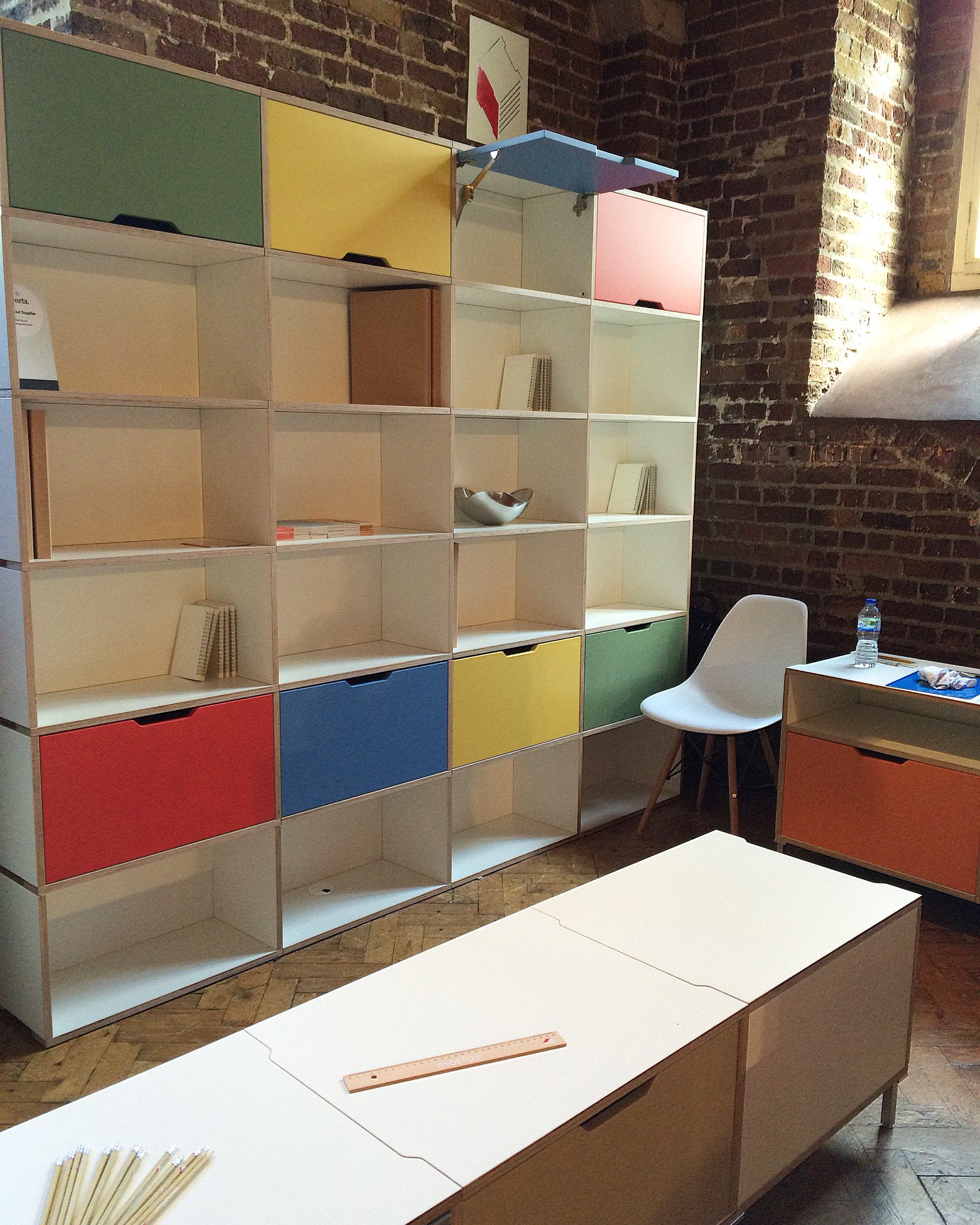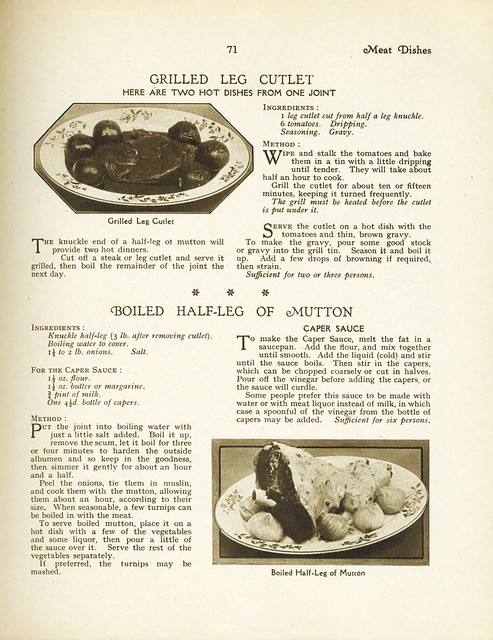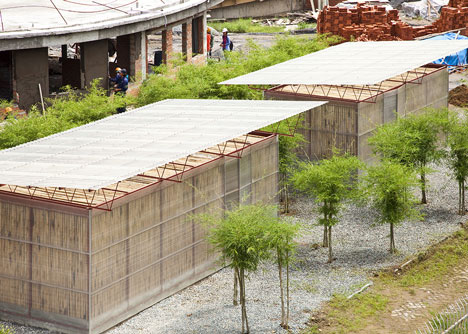A great day out, looking at excellent design
We spent Tuesday at Clerkenwell Design Week, a three day event at where designers of all sorts exhibit their products at various locations in Clerkenwell: mostly furniture, furnishings and lighting, but a whole range of other products including ceramics, graphics, spectacles frames, and wristwatches.
There was much to see, all of it of a very high standard. I was particularly interested in the sort of things that would be suitable for the home, rather than for commercial spaces. These are my personal highlights, the sort of things I would like in my own home, if I could.
Pluck Kitchens
We have been looking around kitchen showrooms, and while there is a lot of good stuff out there, a lot of it is pretty extravagant, and a little flashy for our taste. Pluck are a small firm of joiners in Brixton who have just launched their range of fitted kitchens. I was struck by their simple and restrained designs, and by their choice of colours. Cabinets are made from sustainable birch plywood, to make the most efficient use of the wood, and the surfaces covered with laminate, which is more durable than paint. They also use Sweet Chestnut and London Plane, British woods not often used for furniture, and locally sourced where possible.
The cut-out bit in the the doors and drawers, as an alternative to a doorknob, is elegant and clever:
w152 Busby lamp
A very clever, deceptively simple-looking lamp designed by Industrial Facility for Wästberg, with three USB ports that can be used for charging three separate devices. There are two models: Ambient for a more diffuse light, and Directable, for a more focussed beam. The LED lamps are dimmable. Built in to the charger is an intelligent system that detects the power required to charge each device that is connected to each USB port, so that each devoce charges up at its maximum rate, up to 3A (an iPhone plug charger runs at 1A, and iPad plug at 2.1A). The lamps can be free standing or wall-mounted, and are suitable for a whole range of situations, from bedside tables, to offices, to workshops.
Watch this charming video to get a better idea of the concept:
https://www.wastberg.com/collections/w152-busby/about/
For sale online at
http://www.retailfacility.co.uk/shop/#Busby%20Ambient
http://www.retailfacility.co.uk/shop/#Busby%20Directable
Morfus modular furniture
A range of simple, elegant and robust modular storage units. This British company uses sustainable northern European birch plywood for the units, which are manufactured in Derbyshire. According to the manufacturer, two trees are planted for each one that is used, so that all the CO2 involved in the production of the furniture and the shipping of the raw materials is sequestered. There are quite a few makers of modular furniture, but Morphus are particularly attractive, and I was impressed by their concern for sustainability. The man with the coffee in the picture below is the designer and founder of the company, Tim Williams.
TedWood
Beautiful finely crafted wood furniture, made from British hardwoods by Ted Jefferis, with clean lines, subtle detailing, and elegant proportions. The tops of the tables and benches are varnished, and show the wood to perfection. The legs are slender and tapered, and sometimes spray painted so that they look as though they could be made of metal. The hexagonal brass bolts, flush with the tabletops, which secure them to the legs, are an attractive feature.
http://www.tedjefferis.co.uk
There was lots more that I saw and liked, but one of the most impressive things I came across was not for sale, or made by professional designers. This seating space in one of the exhibition areas was designed, fabricated and built by a group of GCSE (i.e. high school) students, in collaboration with Scale Rule, a collective of "engineers and architects who like teaching, designing, building and learning"

Here is a detail, showing the parts labelled for assembly:
To find out more about this project, there is a free online book.
All in all, it was a fun day out. We saw a lot of beautiful, well-designed things, and it was good to see that many of the makers seemed genuinely concerned with sustainability of their products. If you are interested in design, it's worth taking a day off to visit this show, which does not seem to take place on the weekend.






























